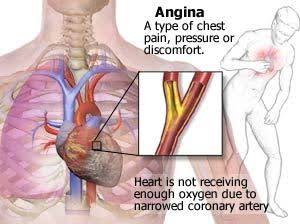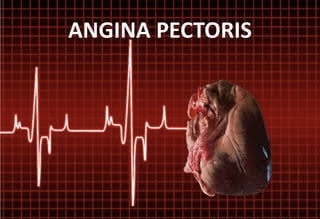In the dead of night, it struck – a vise-like grip, squeezing the air from my lungs. The chest tightener had come for me, its icy fingers wrapping around my heart. I gasped, my mind racing, as the darkness closed in. But I refused to surrender. I remembered the words of my doctor, “Angina Pectoris is a warning sign, not a death sentence.” I knew I had to fight.
With each passing day, the tightness grew, but so did my resolve. I changed my ways, embracing a healthier lifestyle, and slowly, the grip began to loosen. The chest tightener still lurked, but I was no longer its victim. I was a warrior, armed with knowledge and determination. And then, the unthinkable happened – the tightness began to fade, replaced by a sense of freedom, of hope. I had tamed the beast, and my heart was reborn.
Today, I stand victorious, my heart beating strong and free. The chest tightener may still whisper in my ear, but I know its secrets. I know that with every healthy choice, every step taken, every breath made, I am winning. And I want more – more life, more love, more laughter. The chest tightener may have tightened its grip, but it also opened my eyes to a new world of possibilities. I am unstoppable, and my heart is full of hope.
What is Angina Pectoris?

Angina Pectoris, also known as angina, is a medical condition characterized by:
1. Chest pain or discomfort (tightness, pressure, or heaviness)
2. Usually triggered by physical activity, stress, or emotional distress
3. Relieved by rest or medication (nitroglycerin)
Types
1. Stable angina: Predictable patterns of chest pain or discomfort, usually triggered by physical activity or stress, and relieved by rest or medication.
2. Unstable angina: Unpredictable, increasing frequency or severity of chest pain or discomfort, may occur at rest, and is a medical emergency.
3. Variant angina (Prinzmetal’s angina): Caused by coronary artery spasm, often occurs at rest, and may be triggered by emotional stress or exposure to cold.
4. Microvascular angina: Chest pain or discomfort due to reduced blood flow to the heart muscle through tiny blood vessels (microvasculature).
5. Nocturnal angina: Chest pain or discomfort occurring at night, often due to reduced oxygen demand or increased blood flow.
6. Angina equivalent: Non-chest pain symptoms, such as shortness of breath, fatigue, or arm pain, indicating myocardial ischemia.
7. Silent angina: No noticeable symptoms, despite evidence of myocardial ischemia, often detected during stress tests or ECG.
8. Decubitus angina: Chest pain or discomfort triggered by lying down or changing positions.
Understanding the type of angina helps guide treatment and management strategies.
Causes
Primary Causes:
1. Coronary Artery Disease (CAD): Plaque buildup in the coronary arteries, reducing blood flow to the heart muscle.
2. Atherosclerosis: Hardening and narrowing of the coronary arteries due to plaque accumulation.
3. Coronary Artery Spasm: Temporary constriction of the coronary arteries, reducing blood flow.
Secondary Causes:
1. Hypertension: High blood pressure increases the workload on the heart, leading to angina.
2. Heart Valve Problems: Issues with the heart valves can reduce blood flow and increase the risk of angina.
3. Cardiac Arrhythmias: Abnormal heart rhythms can increase the heart’s workload and lead to angina.
4. Anemia: Low red blood cell count or hemoglobin levels can reduce oxygen delivery to the heart muscle.
5. Thyroid Disorders: An overactive or underactive thyroid gland can increase the heart’s workload.
6. Diabetes: High blood sugar levels can damage the coronary arteries and increase the risk of angina.
7. Smoking: Tobacco use damages the coronary arteries and increases the risk of angina.
8. Obesity: Excess weight increases the risk of developing angina.
9. Family History: Genetic predisposition to coronary artery disease or other heart conditions.
10. Age: Risk increases with age, especially after 45 for men and 55 for women.
Pathophysiology
1. Atherosclerosis: Plaque builds up in the coronary arteries, narrowing the lumen and reducing blood flow.
2. Endothelial dysfunction: The inner lining of the coronary arteries becomes damaged, leading to vasoconstriction and further reducing blood flow.
3. Platelet activation: Platelets aggregate at the site of plaque, releasing vasoconstrictors and further reducing blood flow.
4. Vasoconstriction: The coronary arteries constrict, reducing blood flow to the heart muscle.
5. Increased oxygen demand: The heart muscle requires more oxygen due to increased workload, stress, or other factors.
6. Reduced oxygen supply: The narrowed coronary arteries cannot deliver sufficient oxygen-rich blood to the heart muscle.
7. Myocardial ischemia: The heart muscle becomes ischemic, leading to pain and discomfort.
8. Pain signaling: Nociceptors in the heart muscle detect the ischemia and send pain signals to the brain.
9. Chest pain: The brain interprets the pain signals as chest pain or discomfort, characteristic of angina pectoris.
Signs and Symptoms
Typical Symptoms:
1. Chest pain or discomfort: Dull, heavy, or squeezing sensation in the chest, often described as tightness or pressure.
2. Location: Pain usually occurs in the center of the chest, but may radiate to the arms, back, neck, jaw, or stomach.
3. Duration: Pain typically lasts for a few minutes, but can persist for up to 30 minutes.
4. Triggers: Pain often occurs with physical activity, stress, or emotional distress.
5. Relief: Pain usually subsides with rest or medication (nitroglycerin).
Atypical Symptoms:
1. Shortness of breath
2. Fatigue
3. Dizziness or lightheadedness
4. Nausea or vomiting
5. Pain in the arms, back, neck, jaw, or stomach without chest pain
Other Signs:
1. Sweating
2. Pallor
3. Rapid or irregular heartbeat
4. Anxiety or fear
Angina Equivalents:
1. Shortness of breath without chest pain
2. Fatigue or weakness
3. Arm or leg pain without chest pain
Note: Some people, especially women, may experience atypical symptoms or angina equivalents, which can make diagnosis more challenging. If you suspect angina, seek medical attention promptly!
Complications
1. Myocardial Infarction (Heart Attack): Reduced blood flow can cause permanent damage to the heart muscle.
2. Cardiac Arrhythmias: Abnormal heart rhythms can develop, potentially life-threatening.
3. Heart Failure: Angina can weaken the heart, leading to heart failure.
4. Cardiac Arrest: Sudden loss of heart function can occur.
5. Chronic Kidney Disease: Reduced blood flow can damage kidney function.
6. Cerebrovascular Accident (Stroke): Reduced blood flow can increase stroke risk.
7. Peripheral Artery Disease: Reduced blood flow can affect legs and arms.
8. Aortic Aneurysm: Weakened aortic walls can lead to a life-threatening aneurysm.
9. Cardiac Sudden Death: Sudden, unexpected death due to cardiac causes.
10. Reduced Quality of Life: Angina can impact daily activities, causing emotional distress and reducing overall well-being.
Risk Factors
Modifiable Risk Factors:
1. High Blood Pressure(Hypertension)
2. High Cholesterol (Hyperlipidemia)
3. Smoking
4. Diabetes
5. Obesity
6. Physical Inactivity
7. Unhealthy Diet
8. Stress
Non-Modifiable Risk Factors:
1. Age(men > 45, women > 55)
2. Family History of coronary artery disease
3. Male Sex
4. Postmenopausal Status(women)
5. Ethnicity (e.g., South Asian, African American)
Other Risk Factors:
1. Kidney Disease
2. Chronic Kidney Failure
3. Sleep Apnea
4. High Triglycerides
5. Inflammatory Conditions(e.g., rheumatoid arthritis)
Managing modifiable risk factors through lifestyle changes and medical treatment can help reduce the risk of developing angina pectoris.
Prevention
1. Quit Smoking: Smoking cessation programs and support groups can help.
2. Exercise Regularly: Aim for at least 150 minutes of moderate-intensity aerobic exercise or 75 minutes of vigorous-intensity aerobic exercise per week.
3. Healthy Diet: Focus on whole grains, fruits, vegetables, lean proteins, and low-fat dairy products.
4. Maintain a Healthy Weight: Aim for a body mass index (BMI) between 18.5 and 24.9.
5. Manage Stress: Engage in stress-reducing activities like meditation, yoga, or deep breathing exercises.
6. Monitor and Manage Blood Pressure: Aim for a blood pressure below 120/80 mmHg.
7. Manage Blood Cholesterol: Aim for LDL (bad) cholesterol below 100 mg/dL and HDL (good) cholesterol above 60 mg/dL.
8. Manage Blood Sugar: Aim for HbA1c below 7% if you have diabetes.
9. Get Enough Sleep: Aim for 7-8 hours of sleep per night.
10. Regular Health Check-Ups: Monitor cardiovascular risk factors and address any concerns with your healthcare provider.
By following these prevention strategies, you can reduce your risk of developing angina pectoris and maintain a healthy heart.
Treatment and Management
Lifestyle Changes:
1. Quit smoking
2. Exercise regularly
3. Healthy diet
4. Stress management
5. Weight management
6. Get enough sleep
Medications:
1. Nitrates (e.g., nitroglycerin)
2. Beta-blockers
3. Calcium channel blockers
4. Statins
5. Antiplatelet agents (e.g., aspirin)
6. Ranolazine
Medical Procedures:
1. Coronary angioplasty and stenting
2. Coronary artery bypass grafting (CABG)
3. Enhanced external counterpulsation (EECP)
Alternative Therapies:
1. Acupuncture
2. Biofeedback
3. Chelation therapy
4. Meditation and mindfulness
Surgical Options:
1. CABG
2. Heart transplantation (in severe cases)
Device Therapies:
1. Implantable cardioverter-defibrillators (ICDs)
2. Cardiac resynchronization therapy (CRT)
Rehabilitation Programs:
1. Cardiac rehabilitation
2. Exercise training
3. Education and counseling

